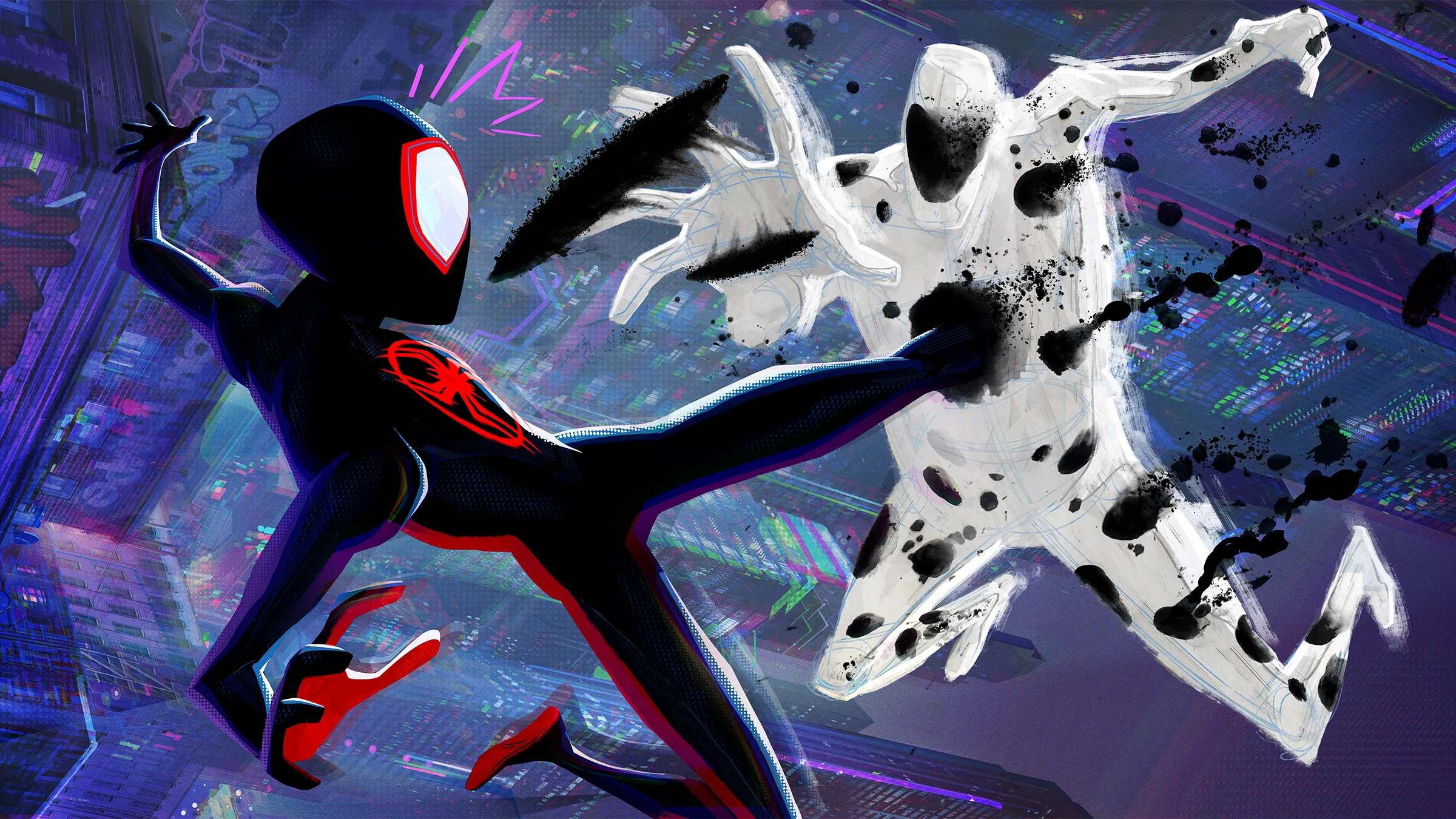Do you need an expensive MacBook to color movies? This Spider-Man: Across the Spider-Verse colorist says no
“Color is an even more powerful tool to elicit emotions than I thought possible.” — Spider-Man: Across the Spider-Verse colorist reflects on working with animation

Spider-Man: Across the Spider-Verse is one of the most visually interesting and striking movies I’ve seen in the last few years. Its predecessor, Spider-Man: Into the Spider-Verse, is just as appealing, thanks to the talents of hundreds of animators, writers, composers, actors, and colorists.
Recently, iMore had the chance to talk to Natasha Leonnet, a Hollywood colorist who has worked on both Spider-Verse movies, Back to Black, Cocaine Bear, Billie Eilish: Happier Than Ever, and Mulan in the last few years alone.
A colorist is responsible for grading and adjusting color in a film to help it keep a distinct and consistent visual identity. They work with advanced ‘panels’, control surfaces smothered with a litany of buttons and dials that correspond to a plethora of different options in extremely specialist software, which pair up with top-notch, incredibly color-accurate screens and projectors to make sure every frame in a movie feels consistent. Leonnet revealed to us that you don’t necessarily need a super beefy Mac to become a colorist — but you do need an excellent screen.
Could one become a colorist with just a Mac or an iPad?

“The question is not which device they are using to color correct, but how precisely their viewing device and environment are calibrated.” Leonnet uses the DaVinci Resolve Advanced Panel v1. Blackmagic Design, who created DaVinci Resolve, is also working on a high-end spatial camera to create videos for Apple Vision Pro so Apple support is baked into many of these devices and software. However, Leonnet works from a Linux machine, with a beefy Nvidia RTX A6000, a special graphics card estimated to be worth thousands of dollars. She also uses a Christis E3LH Dolby Vision Cinema Projector to accurately project all those colors to a scale she can pinpoint and refine. Though a colorist will see the most value out of their panels and viewing device, good hardware will of course help.
A nice Mac won’t help you become a colorist on its own but Apple’s iconic screens are of such high quality that you can really see the work colorists do. Take the most recent iPad Pro for instance. Thanks to its revolutionary OLED screen with new dual layering technology, colors are sharp and super vibrant, and the brightness bump means you can even watch it in a light environment and see all of the work put into films.
Why you should watch Spider-Man: Across the SpiderVerse on an Apple device
If you want to get more out of the best Macs and best iPads, and you love watching movies, you should try to watch both live-action films and animations. Live-action films, due to using real actors, tend to be a bit more grounded and real whereas animation can get more creative freedom with the way it plays with color. From her time working on the Spider-Verse movies, Leonnet told me “I have learned that color is an even more powerful tool to elicit emotions than even I thought possible”
You can watch both Spider-Man: Into the Spider-Verse and Spider-Man: Across the Spider-Verse with Apple TV right now and these are films you will want to buy as they only get better on every rewatch.
iMore offers spot-on advice and guidance from our team of experts, with decades of Apple device experience to lean on. Learn more with iMore!

James is a staff writer and general Jack of all trades at iMore. With news, features, reviews, and guides under his belt, he has always liked Apple for its unique branding and distinctive style. Originally buying a Macbook for music and video production, he has since gone on to join the Apple ecosystem with as many devices as he can fit on his person.
With a degree in Law and Media and being a little too young to move onto the next step of his law career, James started writing from his bedroom about games, movies, tech, and anything else he could think of. Within months, this turned into a fully-fledged career as a freelance journalist. Before joining iMore, he was a staff writer at Gfinity and saw himself published at sites like TechRadar, NME, and Eurogamer.
As his extensive portfolio implies, James was predominantly a games journalist before joining iMore and brings with him a unique perspective on Apple itself. When not working, he is trying to catch up with the movies and albums of the year, as well as finally finishing the Yakuza series. If you like Midwest emo music or pretentious indie games that will make you cry, he’ll talk your ear off.
